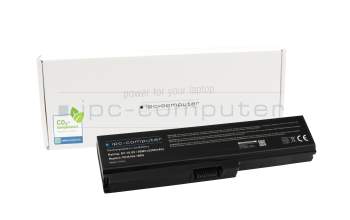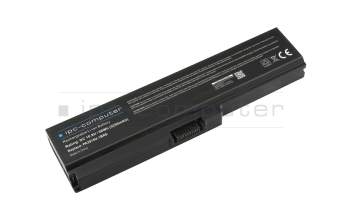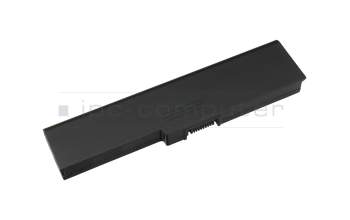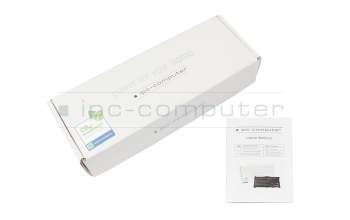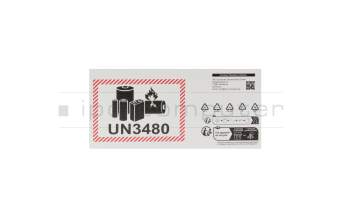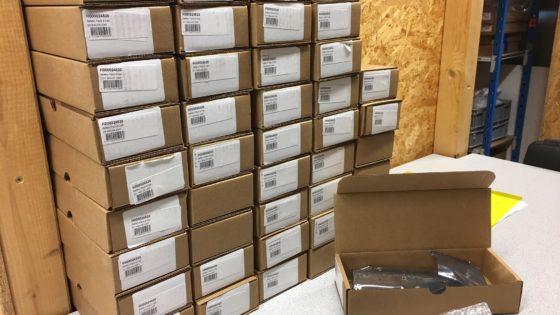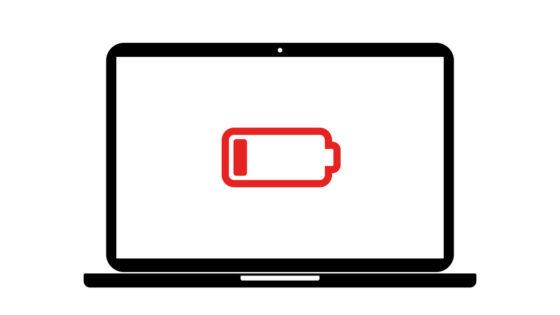Toshiba NB510 Replacement Akku 56Wh
Achtung: Bei vielen im Markt befindlichen Replacement Akkus gibt es Kompatibilitätsprobleme - dieser Akku funktioniert garantiert auch in den Modellen: Toshiba Satellite A660, C670, L735, L750, L755. Die Mehrleistung von 5.200 mAh macht Ihr Notebook mit den verbauten Hochleistungszellen zum Dauerläufer - Akku hällt bis zu 35% länger als der Original-Akku - siehe Video!
Allgemeine Daten
- Artikelzustand
- Neu
- Hersteller
- Kompatibler Artikel der Hausmarke IPC-Computer
- Farbe
- schwarz
Technische Daten
- Akkutyp
- Standard
- Akkutechnologie
- Li-Ion
- Kapazität
- 5200 mAh / 56 Wh
- Ausgangsspannung (Volt)
- 10,8 Volt
- Zellenanzahl (Stück)
- 6 Zellen
Qualitätsmerkmale des Akkus
RoHS kompatibel |
||
ReachG kompatibel und zertifiziert |
||
ChemG Einhaltung aller Stoffverbote |
||
Batterie Gesetz erfüllt |
Qualitätsicherungsprogram gem. ADR 2.2.9.1.7 |
||
Sicherheitstests gem. UN38.3 |
||
| Geprüft wurde auf folgende Punkte: Unterdruckprüfung, thermische Prüfung, Schwingprüfung, Schlagschutzprüfung, äußerer Kurzschluss, Aufprall, Überladung, erzwungene Entladung |
||
Flugzeug zugelassen gem. IATA 2.3.5.9 |
||
| Ab dem 1.1.2013 schreibt die Luftfahrtbehörde IATA, gem. Bestimmung 2.3.5.9 vor, das ungeprüfte LI-ION Akkus vom Transport in Flugzeugen ausgeschlossen sind. Stellt der Hersteller jedoch sicher, das seine Replacement Akkus den Sicherheitstest gem. UN38.3 erfolgreich bestanden haben, sind diese zum Transport im Handgepäck zugelassen. | ||
Vorteile eines IPC-Computer Akkus
Notebook Akkus der Hausmarke IPC-Computer sind Ersatz-Akkus höchster Qualität.
Alle IPC-Computer Akkus enthalten nur die qualitativ hochwertigsten Zellen. Wir lassen diese Akkus in einer der größten Produktionsstätte für Replacement-Akkus in China fertigen. Hier wird vom Platinen-Design, über die Gehäusekonstruktion bis hin zur Produktion und Qualitätssicherung alles aus einer Hand gefertigt.
Die sehr niedrigen Ausfallraten unter 1%, haben uns bewogen, diese Replacement-Akkus mit dem Markenzeichen „IPC-Computer“ zu versehen.
Sie kaufen damit beste Qualität zum günstigen Preis – garantiert!
CO2-Kompensation:
Wir kompensieren den CO2-Ausstoß, der bei der Produktion und dem Transport unserer IPC-Computer Akkus entsteht, vollständig. Dieses Pionierprojekt im Bereich Nachhaltigkeit ist einzigartig, da kein anderer Anbieter eine so umfassende CO2-Kompensation für Laptop-Ersatz-Akkus anbietet.

Original-Akku nicht mehr lieferbar? Kein Problem!
Der Original-Akku Ihres Notebooks ist nicht mehr erhältlich? Das ist kein Grund zur Sorge – denn mit dem IPC-Computer Markenakku erhalten Sie eine hochwertige Alternative, die in Sachen Qualität und Leistung dem Original in nichts nachsteht. Im Gegenteil: Oft überzeugen unsere Akkus sogar mit längerer Laufzeit und besserer Garantie.
✔ 1 Jahr Zufriedenheitsgarantie – optional um weitere 12 Monate verlängerbar
✔ Höchste Qualität & Leistung – entwickelt nach neuesten Standards
✔ Klimaneutral – wir kompensieren den kompletten CO₂-Ausstoß von Produktion bis Lieferung
Setzen Sie auf einen Akku, der nicht nur Ihr Notebook zuverlässig mit Energie versorgt, sondern auch die Umwelt schont – und das mit einem Service, der überzeugt.
Kategorisierung
- Kategorie
- Akku / Batterien
- Verwendung
- Notebook / Laptop
Videos & Beiträge
Wichtige und nützliche Informationen rund ums Thema Notebook Akkus
Blog-Beiträge und Links zu diesem Artikel
Die häufigsten Fragen zum Thema Akkus
- Was ist eine Tiefenentladung beim Laptop‑Akku?
Von einer Tiefenentladung spricht man, wenn ein Akku so weit entladen wird, dass seine Zellspannung unter das erlaubte Minimum fällt. Dabei werden die Akkuzellen geschädigt – in vielen Fällen lässt sich der Akku danach nicht mehr laden oder aktivieren.
Um eine Tiefenentladung zu vermeiden, solltest du deinen Laptop‑Akku bei längerer Nichtbenutzung vorher vollständig aufladen und kühl, trocken lagern. Auch ein Akku, der über Wochen leer im Gerät verbleibt, kann sich selbst tiefentladen.
Wenn dein Ersatz‑ oder Originalakku keinen Strom aufnimmt, kann er tiefentladen sein. Im Video auf notebook‑doktor.de erfährst du, ob und wie sich ein solcher Akku eventuell noch reaktivieren lässt:
Praxistipp:
Wenn dein Akku gar nicht mehr reagiert, lege ihn ins Notebook ein und lass ihn über Nacht am Netzteil angeschlossen. Manchmal erkennt die Elektronik den Akku nach einiger Zeit wieder und der Ladevorgang startet von selbst.Falls Ihr mehr zu dem Thema erfahren wollt haben wie euch hier ein Video verlinkt: Neuer Notebook Akku funktioniert nicht? - "Tiefenentladener" Akku noch zu retten? - Tipps und Tricks - YouTube
- Wie erkenne ich Akku Fälschungen oder Grauimporte sicher?
Moderne Akku‑Fälschungen lassen sich optisch oder am Preis kaum noch Original unterscheiden. Die einzige wirklich zuverlässige Methode ist der Abgleich der technischen Daten auf dem Typenschild mit den im Akku‑BIOS (BMS) gespeicherten Informationen.
Auf jedem Akku sind Werte wie Spannung (Volt), Kapazität (Wh oder mAh), Produktionsdatum und eine Ersatzteil‑ bzw. Teilenummer (Part‑ oder FRU‑Nummer) aufgedruckt. Diese Angaben kannst du mit kostenloser Software – beispielsweise BatteryMon, BatteryInfoView oder HWiNFO – oder direkt im BIOS auslesen. Wenn die in der Software angezeigten Daten von den Werten auf dem Akku‑Label abweichen, deutet das auf Grauimporte oder Fälschungen hin. Besonders auffällig sind Unterschiede bei Produktionsdatum, Designkapazität oder Zellenhersteller.
Optische Merkmale wie Logo, Etikett oder Verpackung sind heute kaum noch aussagekräftig, da viele Fälschungen professionell gemacht sind. Entscheidend ist deshalb der technische Datenabgleich zwischen Label und BMS/BIOS‑Daten.
Eine detaillierte Schritt‑für‑Schritt‑Anleitung findest du in diesen Blogbeiträgen:
- So erkennst du moderne Laptop‑Akku‑Fälschungen (Update 2025) – mit aktuellen Erkenntnissen aus dem Markt und Tools zur Datenauslesung.
- Original oder Fälschung? So prüfst du Akkus auf Echtheit – mit praktischer Anleitung und Beispielen aus der Werkstattpraxis.
Wenn nach dem Abgleich Unsicherheiten bleiben, hilft der Kontakt mit den Herstellern. Hersteller Kontakt-Email Adressen etc. - Link
- Wie Kalibriere ich meinen Akku - Anleitung.
Beim Kalibrieren wird der Akku einmal voll geladen, dann komplett entladen und anschließend wieder voll aufgeladen. Dadurch kann Windows 11 die tatsächliche Kapazität neu berechnen und die Akkuanzeige wieder korrekt darstellen.
So geht’s Schritt für Schritt:
- Öffne Einstellungen → System → Energie & Akku.
Stelle Bildschirm‑ und Ruhezustand auf „Nie“, damit das Notebook während des Entladens weiterläuft. - Akku vollständig laden (100 %) und danach 1–2 Stunden am Netz lassen.
- Netzteil trennen und den Laptop laufen lassen, bis er sich automatisch ausschaltet.
- Akku wieder vollständig aufladen.
- Energieeinstellungen anschließend wieder zurücksetzen.
Das Kalibrieren hilft, wenn die Akkustandsanzeige ungenau ist oder das Notebook bei z. B. 30 % Restladung ausgeht.
Es verbessert die Anzeige, stellt aber keine Akkukapazität wieder her. Wenn der Akku trotz Kalibrierung schwach bleibt, lohnt sich ein Akkutausch – passende Ersatzakkus findest du bei ipc‑computer.de.Schritt für Schritt Anleitung vom Notebook-Doktor oder Anleitung Kalibrierung Lenovo Akku oder Anleitung Kalibrierung DELL Akku
- Öffne Einstellungen → System → Energie & Akku.
- Wie kann ich die Akkulaufzeit meines Laptops erhöhen?
Die Akkulaufzeit hängt von mehreren Faktoren ab – allen voran Displayhelligkeit, Prozessorauslastung, Umgebungstemperatur und Akkualter. Du kannst sie verbessern, indem du die Bildschirmhelligkeit reduzierst, den Energiesparmodus aktivierst, ungenutzte WLAN‑ oder Bluetooth‑Verbindungen ausschaltest und den Akku idealerweise zwischen 20 % und 80 % Ladung hältst. So werden Ladezyklen geschont und die Lebensdauer verlängert.
Wenn dein aktueller Akku bereits deutlich an Kapazität verloren hat, kannst du zusätzlich über den Kauf eines Akkus mit höherer Leistung (mehr Wh) nachdenken. Bei vielen Notebook‑Modellen bietet IPC‑Computer eigene Replacement‑Akkus mit erhöhter Kapazität an – etwa IPC‑Computer‑Akkus, die im Vergleich zu den Herstellervarianten häufig 10–20 % mehr Energieinhalt liefern. Dadurch erreichst du spürbar längere Laufzeiten, ohne auf geprüfte Qualität, Sicherheit und Passgenauigkeit zu verzichten.Mehr Details zur Erhöhung der Akkulaufzeit - Link zum Blogbeitrag
- Wie lange hält eine Akkuladung
Generell ist das nur sehr schwer abzuschätzen. Die Laufzeit im Akkubetrieb hängt von sehr vielen Faktoren ab (CPU, Display, WLAN, Grafikchip).
Üblicherweise kann man bei einem 15,6" Notebook von ca. 20W Leistungsaufnahme im Akku-Betrieb ausgehen. Ein 17''-Notebook kann auch etwas mehr aufnehmen.
Das bedeutet bei 60Wh reicht es für 3 Stunden. t = W/P = 60Wh/20W
Die im Akku gespeicherte Energie kann wie folgt berechnet werden:W = U * i * t das ergibt für einen 6 Zellen Akku mit 4400 mAh 11.1V * 4.4Ah = 48.4 Wh
Damit wären nach obigem Beispiel ca. 2.5h möglich.
Die folgenden Punkte können Ihnen helfen die Akkulaufzeit zu verlängern:- Nutzen Sie die Energiespar-Optionen des Herstellers, dass Notebook benötigt nicht ständig die kompletten Ressourcen. Sie finden diese z.B. Unter Systemsteuerung - Energieoptionen.
- Reduzieren Sie immer die Helligkeit des Displays so weit wie möglich herunter. Die meiste Energie wird von einem zu hellen Display benötigt.
- Schalten Sie die WLAN/Bluetooth-Verbindung an Ihrem Notebook aus, wenn diese nicht benötigt wird.
- Trennen Sie externe Geräte wie z.B. externe Festplatten vom Notebook, wenn Sie diese nicht benötigen.
- Deaktivieren Sie alle nicht benötigten Tools und Programme die evtl. im Hintergrund laufen.
Weitere Informationen finden Sie hier
- Wie pflege und lade ich meinen Akku richtig?
- Ladebereich beachten: Halte den Akkustand möglichst zwischen 20 % und 80 %.
- Extreme vermeiden: Betreibe den Akku nicht dauerhaft unter 10 % oder bei 100 % – das belastet die Zellen unnötig.
- Hitze vermeiden: Hohe Temperaturen sind der größte Feind von Li‑Po‑Zellen. Achte auf gute Belüftung und vermeide direkte Sonneneinstrahlung oder weiche Unterlagen.
- Sicher am Netz: Moderne Notebooks stoppen den Ladevorgang automatisch, sobald der Akku voll ist. Gelegentliches Arbeiten im Netzbetrieb ist also unbedenklich.
Alle Fragen zum Thema Akkus

